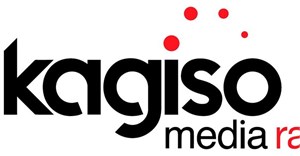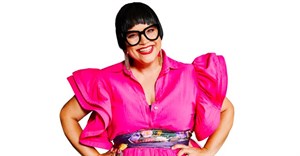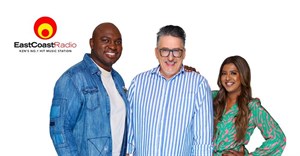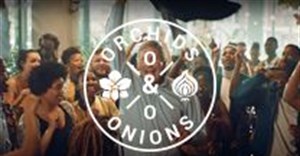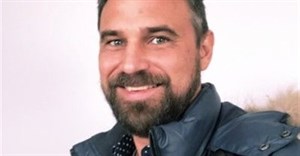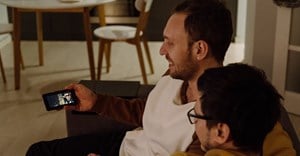Trending
Elections 2024
Jobs
- IT Manager Johannesburg
- Broadcast Engineer Cape Town
The radio natives are restless
What she said was that the successful advertisers of the future (I'm paraphrasing so you can go watch the video here to make your own assumptions) will be the advertisers who enhance the user's experience of the platform they're on. This is, in a trendy buzz phrase "native advertising".
In my inner world I see it as the 'harmonious blend of advertiser and platform'. Currently, harmonious blending is not a skill South African media excels in. I am inharmoniously interrupted all the time by advertising...My YouTube session is interrupted by me having to click 'skip ad'; my magazine reading is interrupted by full-page product adverts that have no relevance to me; my radio listening is interrupted for four minutes every 20 minutes or so that I now switch off to, and my web browsing is interrupted by pop ups and flashing banners. Even my driving is interrupted by billboard messages that sit incongruently within my experience on the road. (What has this got to do with radio man?! It's coming. I'm just building TSL here.)
Where is it all going to end up?
A lot of prophets of the new media space (the ones who were telling us it was all about 'Likes' a year ago) would like us to believe that radio advertising is going to die and that those revenues will flow out of the accounts of the current platforms into the digital clutches of the new breed.
In fact, a lot of radio groups have become so affected by this naysaying that they've listened to and believed the hype-infused fear and started developing (or at least trying to) derivative digital offerings that carry their radio brands, yet completely betray their radio spirits. Where's it all going to end up?
Radio's future
I suggest that a key to radio's future lies in native advertising and content. Great radio, to me, has always been about excellent content - whether through music, vibrant DJ's, excellent news, it doesn't matter - it's about creating content and telling stories with emotional connections.
Radio as a complete content-based communication platform is almost without peer because of the connection it holds with its loyal listeners and an opportunity exists for it to make itself sexy again to be able to leverage that loyalty.
Brands are looking for new ways to use media all over the place as they move from being 'only brands' into being publishers of content. For example, do you feel like you're reading a content marketing title when paging through a W magazine (Woolworths Fashion)? I don't. The quality of the product within lines up beautifully with the strength of the platform's offering, making the experience a pleasant one that's comparable with any other magazine on the shelf.
A radio station is so much more than a single magazine. In fact, a radio station is more like the entire shelf. But brands can't go start their own radio station because of a number of barriers to entries, and so, airtime will become the pages on which they must print their stories.
Monetising airtime in a different way
Enter the radio station that monetises its airtime in a different way: creative stories and episodic content marketing properties that trade in the knowledge economy and earn the trust and goodwill of the listener, produced by brand and station together. Any content marketer worth his salt would be licking his lips at the prospect of access to airtime of that quality.
Content marketers know that people want to hear from their brands. They want to engage with deals and information in a way that adds meaning to their lives. By properly ascertaining what the radio station's true core listenership or target market wants, the station can provide suitably tailored content to meet the needs of those loyal listeners without bombarding them with messaging from anyone who is willing to pay the fee to get into the party.
Music could be used strategically and become the tool of the growing population of local digital downloaders, highlighting the latest and greatest attractions to be found on the download platforms willing to spend. Beatport, MTN Play and Nokia music could all become beneficiaries of this sort of music show creation and the needle time conundrum could be solved through collaboration of platform and provider. Imagine being able to download the top 40 you just listened to with one click or getting exclusive access to the new Daft Punk a week in advance because of the partnership between station and provider.
Lifestyle content could be generated by brands that offer unashamed quality to various target audiences. DIY by MICA, Comedy by Kulula, Tech by Incredible Connection, Financial Advice by Liberty, Green Living by Nedbank - more than just sponsorships, the shows and their strategies will be created from the ground up by the brand custodians and the creative talent at the radio stations.
Competitions and gamification
Exclusive branded micro-apps could be created for the specific shows, new competitions and gamafication along with the on-air content generating another source of revenue. Data mining opportunities and dynamic airtime usage can pump traffic to online destinations and the ROI will be more than just a series of 30 second advert line items on a badly aligned spreadsheet that your sales house sends you at the end of the month.
Greatest opportunity, greatest challenge
Native content is radio's greatest opportunity and, in my opinion, the bridge to true digital integration that won't see it selling its soul.
But within the greatest opportunity for radio also lies the greatest challenge...
The model of the current commercial radio station is built around keeping the advertiser, and not the listener, happy.
In the early 90's radio became the business to be in and a creative rot set in. Program managers stopped using their time developing on-air talent and started developing promotional campaigns. Stations relied on the then valuable commodity of 'music' to keep the listener engaged while they focused their attention on building systems designed to serve the advertisers that were lining up in droves.
True show content producers were the luxury of drive shows and even then were only glorified coffee makers and phone answering monkeys. There was no procurement or development strategy in place to ensure that the talent was always getting better and could be replaced in the event that that talent left. Presenters became good at announcing songs and telling the time in fake accents and looked only to build their own 'personal appearance' kingdoms on the back of the exposure they received from the stations.
The climb back to restoration
And so now radio finds itself in a place where the music alone isn't good enough anymore, the generic advertising model is slowly starting to show the first few hairline cracks (albeit slight) and most presenters can't create engaging originality.
If radio wants to make people feel 'cool' again, (like the first time you saw soundcloud) then locally, stations will need to shift back to developing a content culture. Advertising that enhances the life and listening of the audience is vital because everyday that audience is exposed to a plethora of other platforms willing to take them seriously on an emotional level.
The natives are getting restless and demand to be seen and heard. Radio can achieve this, but then it needs to drop the fear and start the positive climb back to restoration by touching lives authentically and enhancing audience experience with everything it offers.














